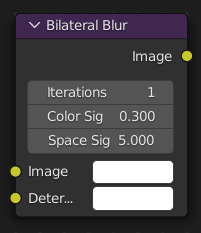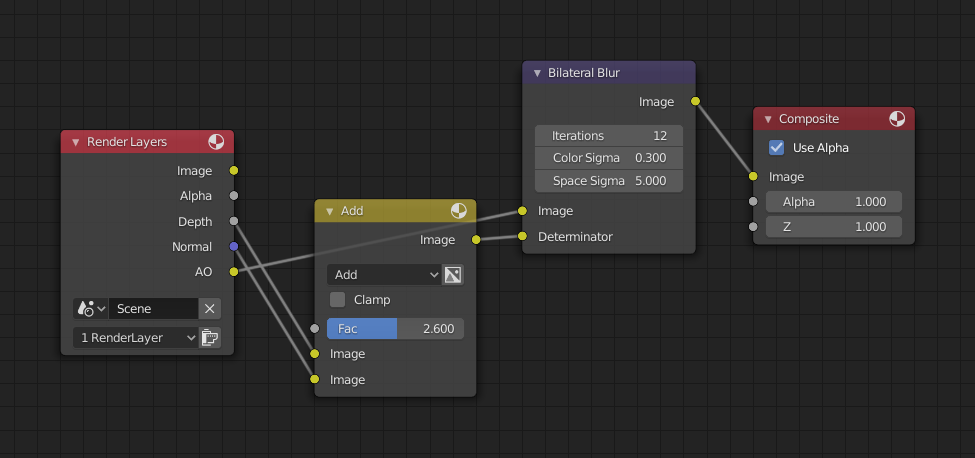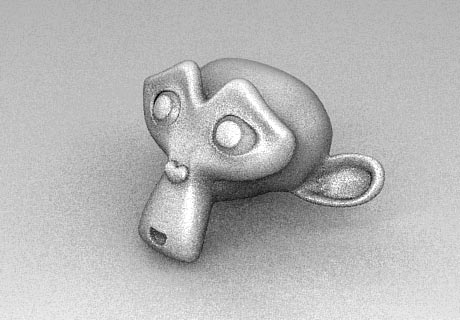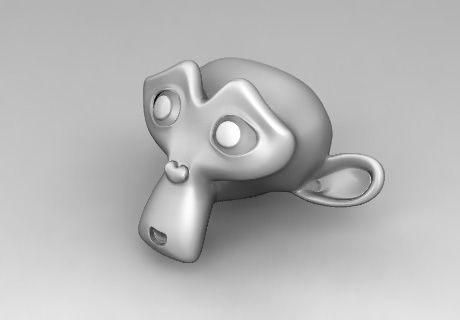Bilateral Blur Node#

The Bilateral Blur node performs a high-quality adaptive blur, blurring the image while retaining sharp edges.
Podrá ser usado para varios propósitos como: suavizar pasadas de procesamiento ruidosas para evitar mayores tiempos de cálculo, por ejemplo en oclusión ambiental por trazado de rayos, refracciones/reflejos desenfocados, sombras suaves o para lograr efectos de composición no fotorrealistas.
Entradas#
- Imagen
Entrada de color estándar. Si sólo se conecta la entrada de imagen, el nodo desenfoca la imagen según los bordes presentes en la imagen de origen.
- Determinator
Which is non-obligatory and if the Determinator is connected, it serves as the source for defining edges/borders for the blur in the image. This has great advantage in case the source image is too noisy, but normals in combination with Z-buffer can still define exact borders/edges of objects.
Propiedades#
- Iteraciones
Defines how many times the filter should perform the operation on the image. It practically defines the radius of blur.
- Color Sigma
Defines the threshold for which color differences in the image should be taken as edges.
- Space Sigma
A fine-tuning variable for blur radius.
Salidas#
- Imagen
Salida de color estándar.
Ejemplo#

Bilateral smoothed Ambient Occlusion. blend-file example#

